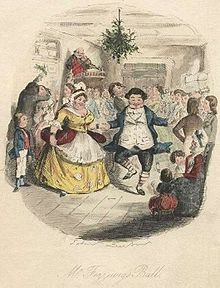History of the time travel concept.
Explanation below.
Statue of Rip Van Winkle in Irvington, New YorkSome ancient myths depict a character skipping forward in time. In Hindu mythology, the Mahabharata mentions the story of King Raivata Kakudmi, who travels to heaven to meet the creator Brahma and is surprised to learn when he returns to Earth that many ages have passed.[2] The Buddhist Pāli Canonmentions the relativity of time. The PayasiSutta tells of one of the Buddha's chief disciples, Kumara Kassapa, who explains to the skeptic Payasi that time in the Heavens passes differently than on Earth.[3] The Japanese tale of "Urashima Tarō",[4] first described in the Nihongi (720) tells of a young fisherman named Urashima Taro who visits an undersea palace. After three days, he returns home to his village and finds himself 300 years in the future, where he has been forgotten, his house is in ruins, and his family has died.[5] In Jewish tradition, the 1st-century BC scholar Honi ha-M'agel is said to have fallen asleep and slept for seventy years. When waking up he returned home but found none of the people he knew, and no one believed he is who he claims to be.[6]
Shift to science fiction
Early science fiction stories feature characters who sleep for years and awaken in a changed society, or are transported to the past through supernatural means. Among them L'An 2440, rêve s'il en fût jamais (1770) by Louis-Sébastien Mercier, Rip Van Winkle(1819) by Washington Irving, Looking Backward (1888) by Edward Bellamy, and When the Sleeper Awakes (1899) by H.G. Wells. Prolonged sleep, like the more familiar time machine, is used as a means of time travel in these stories.[7]
The earliest work about backwards time travel is uncertain. Samuel Madden's Memoirs of the Twentieth Century (1733) is a series of letters from British ambassadors in 1997 and 1998 to diplomats in the past, conveying the political and religious conditions of the future.[8]:95–96 Because the narrator receives these letters from his guardian angel, Paul Alkon suggests in his book Origins of Futuristic Fiction that "the first time-traveler in English literature is a guardian angel."[8]:85Madden does not explain how the angel obtains these documents, but Alkon asserts that Madden "deserves recognition as the first to toy with the rich idea of time-travel in the form of an artifact sent backward from the future to be discovered in the present."[8]:95–96In the science fiction anthology Far Boundaries (1951), editor August Derlethclaims that an early short story about time travel is "Missing One's Coach: An Anachronism", written for the Dublin Literary Magazine[9] by an anonymous author in 1838.[10]:3 While the narrator waits under a tree for a coach to take him out of Newcastle, he is transported back in time over a thousand years. He encounters the Venerable Bede in a monastery and explains to him the developments of the coming centuries. However, the story never makes it clear whether these events are real or a dream.[10]:11–38 Another early work about time travel is The Forebears of Kalimeros: Alexander, son of Philip of Macedon by Alexander Veltman published in.
In 1836 Mr. and Mrs. Fezziwig dance in a vision shown to Scrooge by the Ghost of Christmas Past.Charles Dickens's A Christmas Carol (1843) has early depictions of time travel in both directions, as the protagonist, Ebenezer Scrooge, is transported to Christmases past and future. Other stories employ the same template, where a character naturally goes to sleep, and upon waking up finds itself in a different time.[12] A clearer example of backward time travel is found in the popular 1861 book Paris avant les hommes (Paris before Men) by the French botanist and geologist Pierre Boitard, published posthumously. In this story, the protagonist is transported to the prehistoric past by the magic of a "lame demon" (a French pun on Boitard's name), where he encounters a Plesiosaur and an apelike ancestor and is able to interact with ancient creatures.[13]Edward Everett Hale's "Hands Off" (1881) tells the story of an unnamed being, possibly the soul of a person who has recently died, who interferes with ancient Egyptian history by preventing Joseph's enslavement. This may have been the first story to feature an alternate history created as a result of time travel.[14]:54
- Early time machines
One of the first stories to feature time travel by means of a machine is "The Clock that Went Backward" by Edward Page Mitchell,[15]which appeared in the New York Sun in 1881. However, the mechanism borders on fantasy. An unusual clock, when wound, runs backwards and transports people nearby back in time. The author does not explain the origin or properties of the clock.[14]:55 Enrique Gaspar y Rimbau's El Anacronópete (1887) may have been the first story to feature a vessel engineered to travel through time.[16][17] Andrew Sawyer has commented that the story "does seem to be the first literary description of a time machine noted so far", adding that "Edward Page Mitchell's story 'The Clock That Went Backward' (1881) is usually described as the first time-machine story, but I'm not sure that a clock quite counts."[18] H. G. Wells's The Time Machine(1895) popularized the concept of time travel by mechanical means.[19]



إرسال تعليق